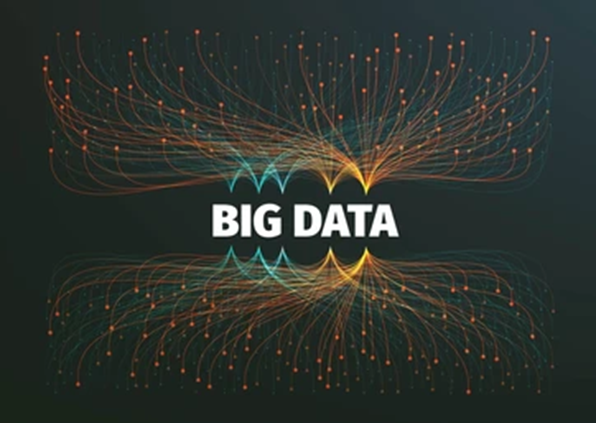Big data technologies are software tools for analyzing, processing, and interpreting large amounts of structured and unstructured data that cannot be handled manually or conventionally. Therefore, many risks can be avoided by drawing conclusions and making predictions. Operational and analytical big data technology are two types. Analytics technology deals with stock markets, weather forecasts, scientific calculations, and more, while operational technology deals with day-to-day activities like online transactions and social media interactions. Data extraction, visualization, and analysis all benefit from big data technologies.
Technology for big data:
To help you identify the upcoming technologies and trends, we have compiled a list of some big data technologies with concise descriptions.
Apache-spark:
A big data processing engine with high speed. It was designed with data processing in real-time in mind. In the AI and ML space, rich machine-learning libraries work well. On computers clustered together, process data concurrently. RDD, or resilient distributed data set, is Spark’s primary data type.
NoSQL Database:
It is a fast, non-relational database that stores and retrieves data quickly. It is unparalleled in its capacity to handle structured, semi-structured, unstructured, and polymorphic data.
The following types of SQL databases are not available:
- Data is stored in the form of documents in a document database, which can hold many key-value pairs.
- Store of Graphs typically stores data in the form of a network, like social network data.
- Value-key store: The most basic NoSQL database. Along with their values, the names of all database elements are saved as attribute “keys.”
- Wide Column Store stores data in a column-based format rather than a row-based format in this database. Examples include HBase and Cassandra.
Apache Kafka:
Kafka is a distributed platform for streaming events that process many events each day. It is useful for creating real-time streaming data pipelines that reliably retrieve data between systems or applications because it is fast and scalable.
ApacheUzi:
A system for scheduling workflows and managing Hadoop jobs. Scheduled in the form of a directed acyclic graph (DAG) of actions are these workflow jobs.
Apache Airflow:
Workflow scheduling and monitoring can be done on this platform. Projects can be organized more effectively with the help of smart scheduling. If a failure, Airflow can run DAG instances again. Its extensive user interface makes it simple to visualize your execution process throughout its various stages, including production, tracking progress, and troubleshooting if necessary.
Execute apex:
It is a unified model for defining and operating ETL and streaming data processing pipelines. Since no API links all the systems, such as Hadoop, Spark, and so on, the Apache Beam system serves as an abstraction between the application logic and the big data ecosystem.
ELK array:
Elasticsearch, Logstash, and Kibana are trademarks of ELK. Elasticsearch is a powerful search engine and schema-free, easily scalable database that indexes all fields. Events can be captured, transformed, and stored in Elasticsearch using Logstash, an ETL tool.
The dashboard tool in Elasticsearch called Kibana lets you look at all your stored data. The strategy of your company can be improved with the help of practical lessons learned from Kibana. Kibana has always been very useful, from recording changes to making predictions.
Both Kubernetes and Docker:
These are brand-new methods that make it easier to run applications in Linux containers. “Build, ship, and run any app, anywhere” can be accomplished with the assistance of the open-source tools in Docker.
Additionally, Kubernetes is an open-source container/orchestration platform that makes it possible for many containers to cooperate. In the end, this lightens the load on the operations.
TensorFlow:
Deep learning models can be designed, constructed, and trained with this open-source machine learning library. Data flow graphs are used in TensorFlow for all calculations. There are nodes and edges in a graph. Data is represented by the edges and mathematical operations are represented by the nodes. TensorFlow can be used for both research and manufacturing. Python, C++, R, and Java are all supported for their implementation.
Presto:
Facebook developed the open-source SQL engine Presto, which is capable of processing petabytes of data. Presto, in contrast to Hive, does not rely on MapReduce techniques, which speeds up data retrieval. It can interface with other file systems because of its architecture and interface. It is currently very popular for processing big data due to its low latency and ease of interactive queries.
Polybase:
Polybase makes use of data that is stored in a parallel data warehouse (PDW) and runs on an SQL Server. PDW integrates with Hadoop and is made to handle any amount of relational data.
Hive:
Hive is a data querying and analysis platform for large data sets. It provides HiveQL, a query language that is like SQL and is internally transformed into MapReduce before processing.
Technology has introduced so many mature technologies to the market because of the rapid growth of data and the immense efforts made by organizations to analyze big data that it is extremely beneficial to be aware of them. By increasing operational efficiency and predicting related behavior, big data technologies are currently addressing many business needs and issues. Companies as well as people are competing in the big data and technology race.
